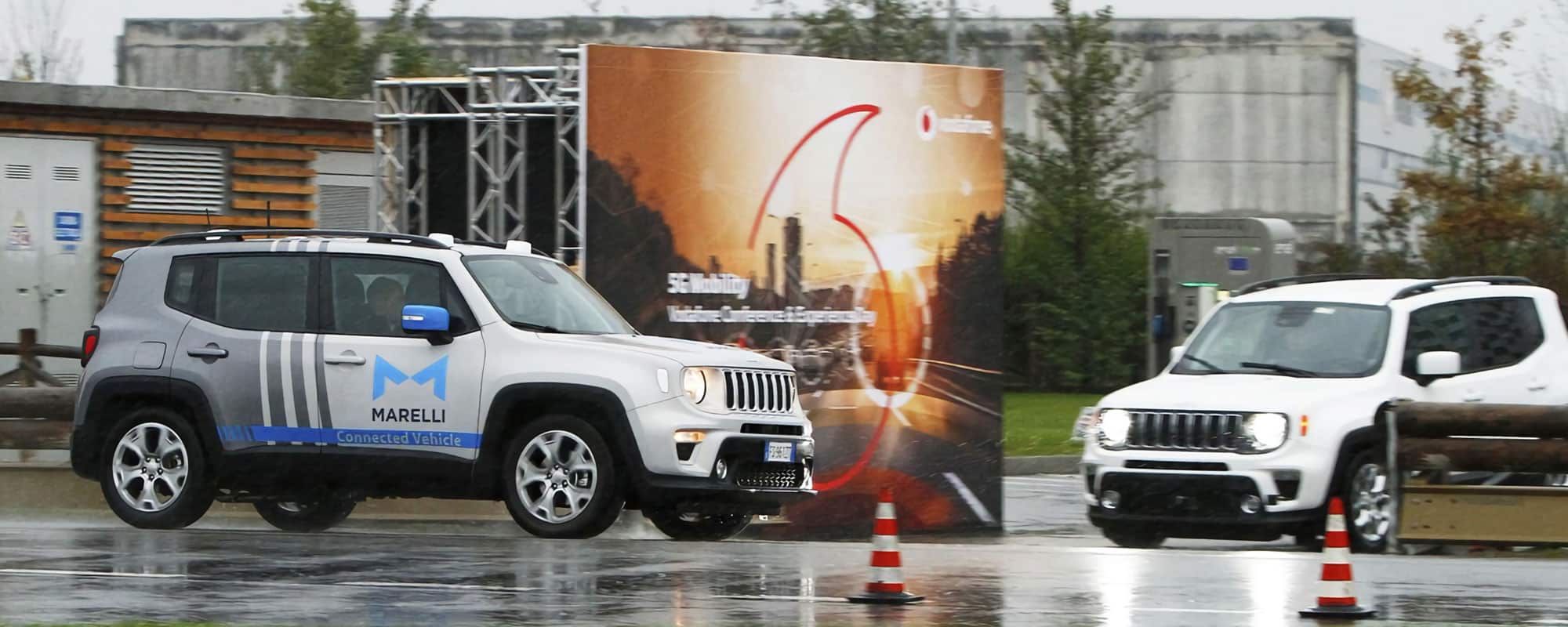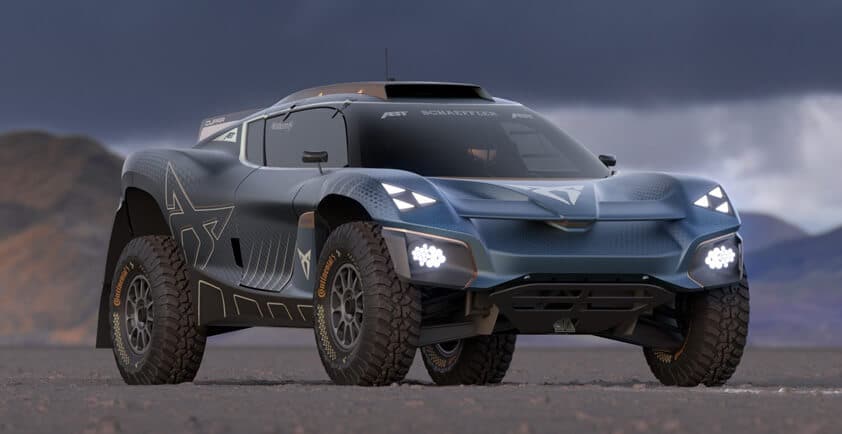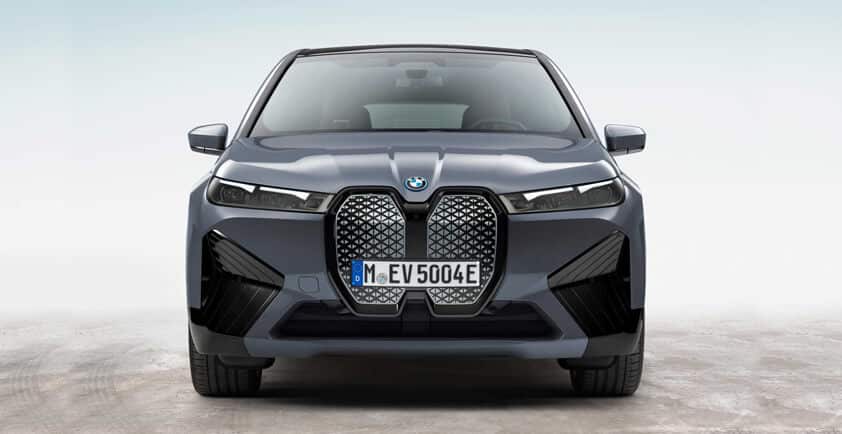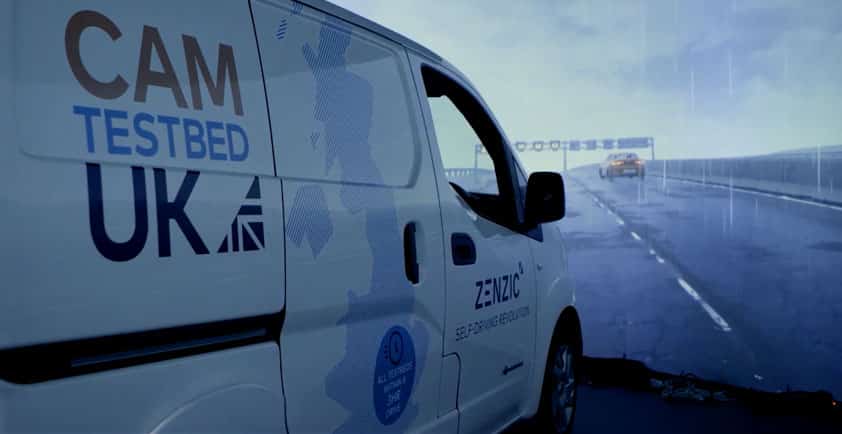

5G DRIVES ROAD SAFETY IN ITALY
Connected cars have long captured society’s imagination and the excitement has grown with the arrival of 5G. This new-generation network offers low latency and reliable connectivity, paving the way to a world of connected people, vehicles and infrastructures that communicate and interact in real time.
From changes in automatic emergency braking systems, to assisted overtaking and information sharing about what is going on on the road around the vehicle - 5G will gradually disrupt the way we move and drive.
At Vodafone, the team has been experimenting with 5G in mobility and has had to redesign driving processes from scratch, building systems with simplicity and intuitiveness in mind.
We were excited to be able to showcase some of this work at an event in Italy at the start of last month.
As the "5G capital of Europe", Milan has been at the forefront of innovation enabled by this technology and was the backdrop for this latest event, dedicated to the future of automotive. Attended by the industry’s leading figures, we discussed the key role that new technologies are playing and shared some of our recent breakthroughs.
At a cross road
During the event, Vodafone showcased four use cases addressing the safety of drivers, passengers and the surrounding environment. It was also the first time Vodafone had showcased assisted driving solutions on our 5G network in Italy.
The first project was presented with several partners and involved vehicles and infrastructure "talking" to one another to expand the visual range of current safety systems and prevent collisions between vehicles approaching an intersection.
Cooperative Urban Cross Traffic sends visual and acoustic warning signals to the driver if you are at risk and activates, if necessary, the emergency breaking system. Thanks to 5G, this solution can react in real time, improving safety on the road.
Live assisted driving solutions
Ever wanted to overtake, but not known if it was safe to do so? The second project focussed on assisted driving when overtaking. See Through enables vehicles to exchange high-definition videos in real time, so that the driver’s visual range can be extended even when visibility is obstructed. This helps to prevent accidents, especially in the case of overtaking.


Thanks to 5G, the driver receives real time footage from the vehicle ahead, "seeing through the obstacle" and ensuring that the lane is free and safe for the overtaking manoeuvre.
Our intelligent speed adaptation and control demonstration also increases car passengers’ safety by using vehicles and infrastructure to share static and dynamic information about the road ecosystem. For example, whether there are speed limits, the roads are narrow or if there are dangerous curbs or road surfaces.
The car’s speed is then dynamically altered to increase safety and comfort.
Smart queuing
The fourth demonstration, Highway Chauffeur, looks to improve traffic flow and reduce congestion, fuel consumption and emissions. By monitoring, in real time, the position and speed of vehicles that are queuing in a single lane, this information can be shared with a moving vehicle allowing it to adapt dynamically to traffic conditions and maintain a safe tailing distance.
This evolves and expands today’s current standard Adaptive Cruise Control (ACC) systems and is a great example of how 5G is more than a technology innovation. Its development will impact the whole ecosystem.
Steering societal change
In the example of mobility, developing connected-vehicle-to-everything communication applications and services enables users, be it the driver, passenger or even pedestrians, motorcyclists and cyclists, to be more aware of their surroundings and potential threats.
In a recent automotive event held by the 5G Automotive Association in Turin last month, the live demonstrations similarly showcased the extensive capabilities of today’s connected-to-vehicle-to-everything technology and underlined the enhanced safety benefits that can be expected thanks to the versatility of 5G.
From protecting vulnerable road users with pedestrian alerts, to allowing public authorities and road operators to provide real-time warnings to drivers about the environment, these examples go beyond the direct user.
We must continue to look at the wider picture and put people and society at the heart of what we do, moving from reactive to preventive safety, including fighting distraction through our driving academy services and contributing to the future of connected mobility.
This is a complex ecosystem and technology companies and car manufacturers alike have an important role to play in building the vehicles of the future.
Author: Erik Brenneis - CEO, Vodafone IoT













